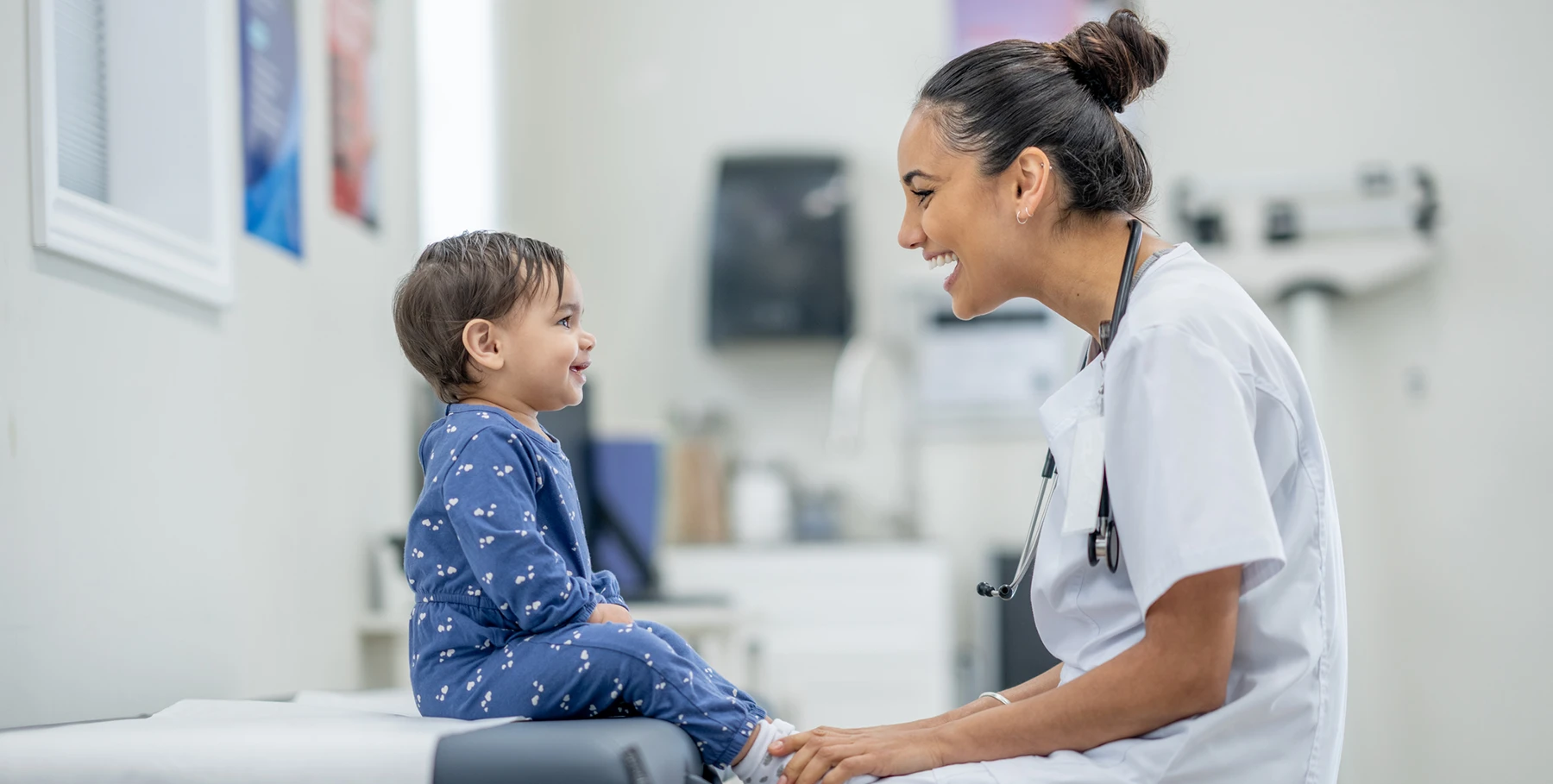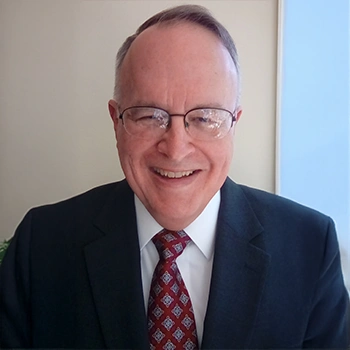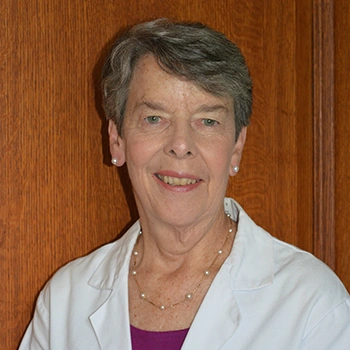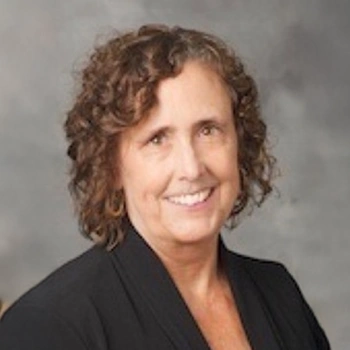MAVEN Project physician volunteers provide regular education sessions on the latest advances in medicine to support the ongoing learning and development of safety net clinic providers. The Laurie Green, MD Educator Award is given annually to a physician volunteer who goes above and beyond to serve our partners’ education needs. We are honored to present the 2024 Educator Award to Najah Musacchio, MD.
Can you talk about the need for expertise in pediatrics, particularly concerning mental health, in underserved communities?
There is an ongoing mental health crisis right now in children and adolescents, with record numbers of anxiety, depression, ADHD, and eating disorders. Undermanaging mental health conditions can have a huge impact on a young person’s life—how they view themselves, how they get along with family and friends, whether they participate in activities, how they do in school, if they stay in school, if they can keep a job, or if they engage in high-risk behaviors like unprotected sex or substance abuse, which can then lead to self-harm and risk of suicide.
For a lot of kids, getting help is life or death. Our goal as clinicians is to identify and get patients into treatment early to get the best outcomes.
The major barrier is that people cannot access treatment, often even with private insurance. For those with public insurance or who are uninsured, it is extremely difficult to get in to see a child psychiatrist. A child may be on a waitlist for three months, 12 months, or 18 months. For a teenager with depression, that’s a lifetime, and so much can happen in that period. It’s agonizing as a parent to feel that paralysis and watch your child deteriorate.
I think that the ideal model of care is embedding mental health services in primary care settings.
Why are primary care settings key to supporting mental health in young patients?
First, you know who your PCP is, right? You like them, hopefully, and you trust them. You know how to get to their office. You know that they take your insurance or lack of insurance, and they have all of your medical records so they can take a holistic view. That foundation of trust removes a huge barrier to treatment; teenagers are much more likely to open up to their PCP than a psychiatrist whom they don’t know.
Second, PCPs can diagnose and manage all of the physical issues that can accompany mental health conditions, such as stomachaches, headaches, or lightheadedness, all in the same clinic visit. This underscores the idea that mental health is just a part of total body health and is therefore the domain of your PCP.
Why isn’t this happening now?
Many PCPs lack training in mental health care for kids. Even as a pediatrician, my own training was limited. The amount of clinical experience ranges widely, including for physician assistants and nurse practitioners, who provide a lot of primary care services.
Furthermore, training in this subject tends to be more theoretical than pragmatic—meaning we might be able to diagnose depression, but less able to advise on specific medication or a long-term treatment plan. If providers don’t feel comfortable treating mental health in their clinics, they may simply choose not to.
When it comes to mental health, how is treatment different for children than adults?
In a pediatric appointment, you may be in the room with both a teenager—your patient—and their parent. You need to feel comfortable talking to both individuals about their concerns, and they might have different opinions about what’s going on. With adolescents, a lot of what we do is motivational interviewing, because we know simply giving direction to someone that age isn’t going help.
We think about how to support a teenager in making healthy decisions for themselves. We focus on giving them the education and tools they need so they decide, and they feel empowered. The process may involve asking questions or suggesting trying something as an experiment. These approaches work way better than being heavy-handed or paternalistic, which is only going to backfire.
As a MAVEN Project physician volunteer, how do you educate providers on communicating with youth and adolescent patients?
I’ve led continuing medical education (CME) lectures on how to counsel a young patient on substance use or drinking. If a patient indicates they are experimenting with something, how do you talk to them about risks without motivating them to tune out immediately? For example, if a teenager is drinking, a provider can try asking them if they’ve ever noticed something go wrong after a friend had too much alcohol. By recalling their friend getting sick or embarrassing themselves, the patient might make their own connection between the behavior and bad outcomes.
How can mentoring inform pediatric mental health care?
I know from my own experience as a mentee how valuable MAVEN Project’s mentoring service is. When I joined a practice as a junior faculty member, I shadowed two established doctors for a long time. Observing how they talked to teenagers was so helpful—I still use a lot of their phrases and approaches, and they inform how I teach clinicians through MAVEN Project.
Those in community health settings may not have the opportunity to observe an experienced practitioner, and they might feel stuck, as so many PCPs do, when treating youth or adolescent mental health. But thanks to MAVEN, they have access to the same kind of expertise that I did.
In what ways do you believe MAVEN Project can help bridge gaps in care, especially for patients in remote or underserved areas?
For patients in underserved areas, the closest child psychiatrist might be over an hour away. The patient’s family might not have transportation or insurance, or there might be a language barrier. And as we discussed, local primary care practices may be underequipped to provide mental health services. This is where MAVEN Project fills a crucial gap.
When it comes to CME, clinics frequently request specific topics like ADHD, eating disorders, anxiety, and depression. This tells us that the clinic is seeing patients with these conditions and needs pragmatic guidance, so that’s how I plan lectures. We can review a chart of medicines and talk about starting doses, or assess when patients should come back for a follow-up. We also talk about what language to use when patients indicate they are self-harming, or when someone’s anxiety is so acute they can’t sleep. I want clinicians to feel empowered to offer specific guidance and not simply default to common advice like try meditation, eat a balanced diet, and exercise.
Covering these same topics in eConsults can save patients an external referral and all the barriers that come with it. I’ve done numerous mental health consults but also advised on general adolescent care, such as irregular periods or possible hormone imbalances. We can save a young patient a referral to a gynecologist and instead help them in a setting where they’re already comfortable.
Can you share a particularly rewarding experience or success story from your work with MAVEN Project?
I worked with one mentee on how to communicate with patients who are dealing with self-harm or suicidal thoughts. All providers are trained to ask basic questions like, “Have you ever wanted to hurt yourself or kill yourself?” But they don’t necessarily know what to do if the answer is yes, or how self-harm and suicidal thoughts can differ. For example, someone cutting themselves may be doing it to feel better, or relieve stress, or express a really strong emotion. These are all different from trying to commit suicide.
If a patient acknowledges self-harm or suicidal thoughts, a provider’s instinct might be to tread carefully around follow-up questions, but it’s actually crucial to be explicit and direct in order to assess the patient’s safety. Why did you cut yourself? Did you intend to kill yourself? These are heavy topics, but we can’t shy away from them.
Because of our conversation, my mentee was able to consult a patient who had suicidal thoughts, get him in to see a counselor that same day, and develop a safety plan. She felt way more confident while assessing the patient and in her plan of management.
Looking back on your career, what accomplishment are you most proud of?
I started and directed the mental health and primary care program for adolescents and young adults at Lurie Children’s Hospital in Chicago. I was inspired by working in a Texas clinic that had embedded mental health in their primary care setting. We had psychologists on-site and dietitians who specialize in eating disorders. That was where I got all of my mentorship and education on providing mental health in primary care, and I became very passionate about it.
At Lurie, I saw an opportunity to plug a similar gap. We saw patients ages 10-25 with conditions like anxiety, depression, or ADHD, and we trained residents and other clinicians—even attendings!—about how to provide these services.
Based on your own experience, why is MAVEN Project’s peer-to-peer model so effective in helping patients?
Over many years of working with primary care providers to treat mental health, I’ve observed over and over that when clinicians can consult mentors about mental health treatment, they are empowered to push themselves beyond their normal scope. This is exactly how we support clinicians through MAVEN Project: we’re giving them the tools and confidence they need to single-handedly help a lot of patients amid a national mental health crisis.
In one education session that I led on treating ADHD, clinicians had so many questions that we did a follow-up session to address them all. I kept thinking about how many providers I was able to reach at once through those conversations, each one of whom has changed their practice because of what they’ve learned. They can treat many more patients, and patients will seek them out.





